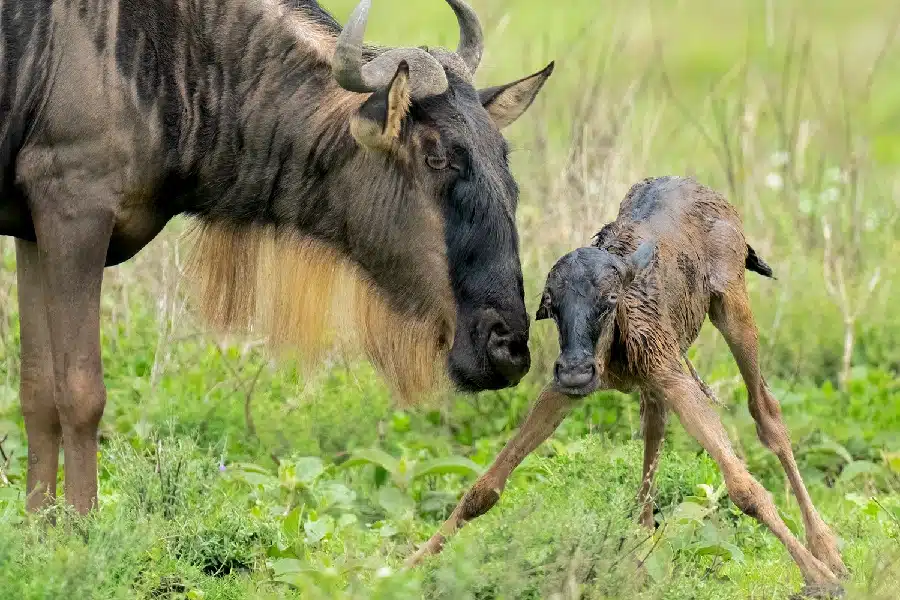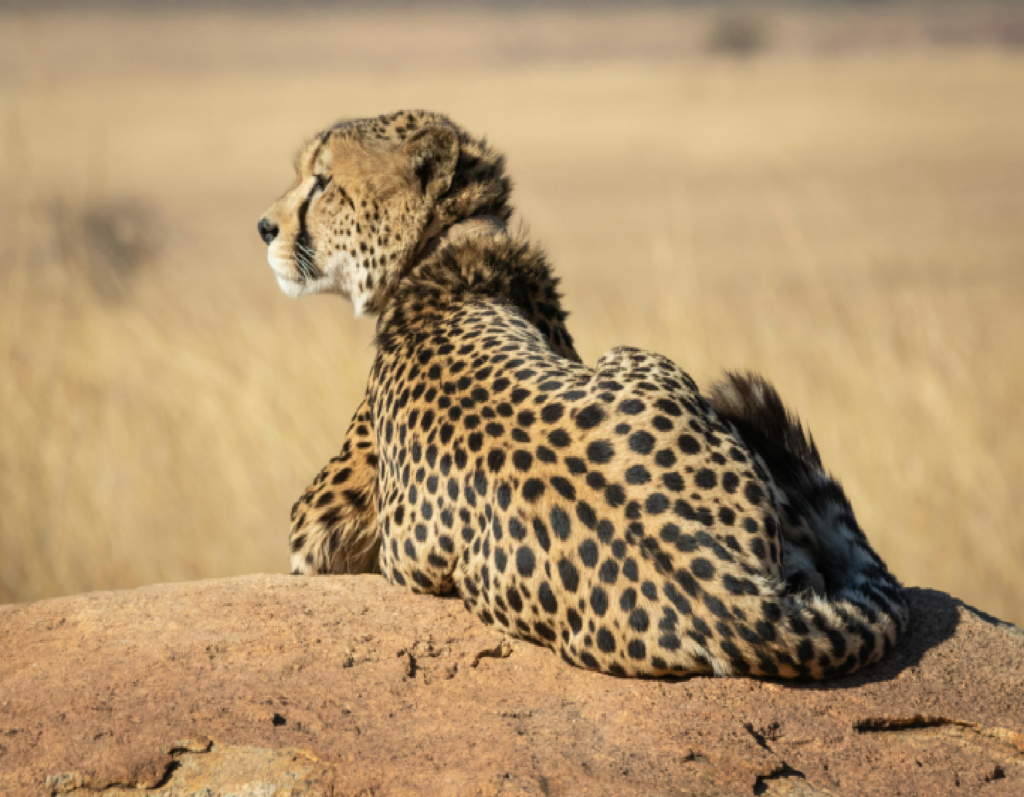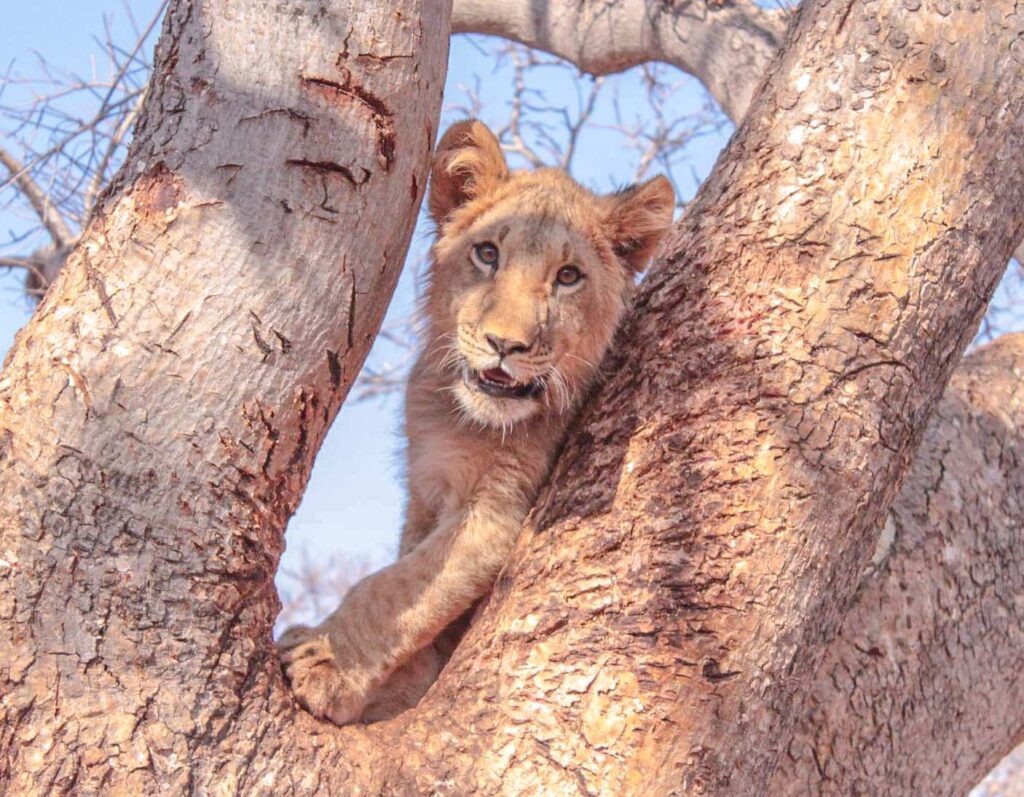The Serengeti, home to the wildebeest calving season is a vast, iconic ecosystem that stretches over 30,000 square kilometers in northern Tanzania. It is home to some of the world’s most spectacular wildlife, including lions, cheetah, elephants, giraffe and the great wildebeest migration. Each year, over 1.5 million wildebeest, accompanied by hundreds of thousands of zebras and gazelles, travel in a circular fashion across the Serengeti-Mara ecosystem in search of fresh grazing and water sources. This journey is known as the great migration and it’s an incredible spectacle to behold.
The migration is a continuous cycle of movement, as the herds travel from the southern plains of the Serengeti to the Masai Mara and back again. But perhaps the most significant event of the migration is the calving season. During this period, which typically occurs between January and March, the wildebeest give birth to their young in the southern Serengeti plains, marking the start of a new generation of animals that will make the perilous journey in the months to come.
The calving season is a critical time for the wildebeest, as it’s a period of intense vulnerability for both mothers and calves. The mothers must protect their young from predators such as lions, hyenas, leopards and cheetahs, while also ensuring that they get enough milk to grow and develop. Meanwhile, the calves must quickly learn to stand and walk, as well as recognize their mother’s distinctive call and scent.
Many wildebeest will give birth on the move, as they follow the rest of the herd in search of food and water. However, some wildebeest will stop and give birth in one place, and these areas become a magnet for predators.
The predators in the Serengeti are well aware of the calving season, and they take advantage of the situation by hunting the young animals. Lions are particularly adept at preying on wildebeest calves, and they will often stake out an area where a mother has given birth, waiting for the calf to become separated from its mother. Hyenas are also a major threat to the young wildebeest, and they will often work together in packs to take down a calf.
The calving season is not just a time for the predators, however. It is also a time of plenty for the park’s herbivores. The young wildebeest are born with a strong instinct to run and can stand within minutes of being born. They are also able to walk within an hour of being born, which is essential as they need to keep up with the herd to avoid predators. The young wildebeest and other herbivores are also very vulnerable during the first few weeks of their lives, and they need to feed regularly to build up their strength. This creates a feeding frenzy for the park’s predators, but it also means that the herbivores need to be constantly on the move in search of fresh grazing.
Despite the challenges, the calving season is a time of great abundance in the Serengeti. The vast herds of wildebeest attract a range of predators, from large carnivores such as lions and leopards to scavengers like vultures and jackals. This creates a vibrant ecosystem with a complex web of interdependencies and interactions.
For visitors to the Serengeti, the calving season offers a unique opportunity to witness the miracle of new life and the raw power of nature. It’s a time when the plains are teeming with young animals, and the air is filled with the sounds of bleating calves and the grunts of protective mothers. It’s also a time when the predators are particularly active, making it easier to spot these elusive creatures in their natural habitat.
One of the best places to witness the calving season is the Ndutu region of the southern Serengeti. This area is known for its large concentrations of wildebeest and is where many of the calves are born. It’s also a popular destination for safari tours and offers a range of accommodation options, from luxury lodges to tented camps.
While the calving season is undoubtedly a highlight of the Serengeti, it’s important to remember that it’s also a fragile ecosystem that needs protection. The wildebeest migration is under threat from a range of factors, including climate change, habitat loss, and poaching. Conservation efforts are therefore critical to ensuring that this incredible natural spectacle continues for generations to come.
In recent years, there have been several initiatives aimed at preserving the Serengeti ecosystem and promoting sustainable tourism. These include measures to reduce the impact of human activities on the environment, such as limiting the number of vehicles allowed in the park and promoting responsible camping practices. There are also projects focused on educating local communities about the importance of conservation and providing alternative livelihoods to reduce the pressure on natural resources.
In conclusion, the great migration calving season in the Serengeti is a truly remarkable event that showcases the power and resilience of nature. It’s a time when the plains come alive with new life and when the delicate balance of the ecosystem is on full display. While it’s important to appreciate the beauty of this natural spectacle, it’s equally crucial to remember that the Serengeti ecosystem is under threat and requires protection. By supporting conservation efforts and responsible tourism practices, we can help ensure that future generations can also experience the wonder of the great migration and the calving season. It’s our responsibility to preserve this incredible natural heritage for the benefit of both wildlife and people alike.
If you would like to visit Ndutu during the Wildebeest calving season in 2024 we are returning to Tanzania in February to see this stunning event in nature. For more information visit Tanzania Safari Tour – 9 Day highlights of Tanzania February 2024 (bradyswildlifeadventures.com)






